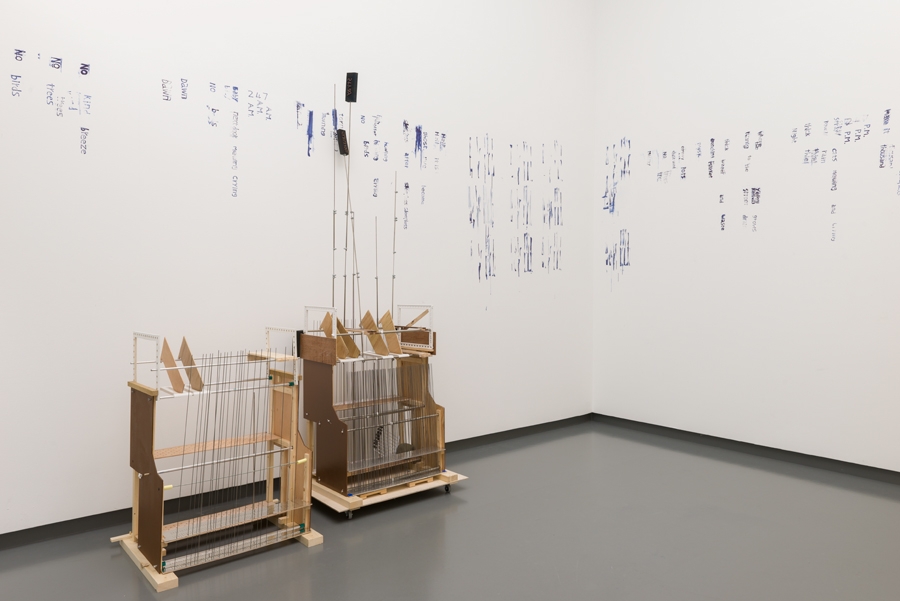In 2008, following a period of itinerant existence during which she made her home wherever she was exhibiting, Jewyo Rhii decided to settle in a studio in the Itaewon area of Seoul. The artist, selected for the UK’s New Contemporaries in 2000 and included in the Korean Pavilion’s group show at the 2005 Venice Biennale, quickly realised that her newfound existence seemed somehow no less precarious, struggling to negotiate the neighborhood and various oppressive conditions of her studio. This tension, eventually productive, became the focus of a series of evening exhibitions (titled Night Studio) that she began to host in the space, which she opened to the public on several occasions in the course of around three years, showing works that subtly dramatised her struggles to exist there. These interventions became sculptures that have since moved to more traditional exhibition spaces, and formed the basis of her 2013 exhibition Walls To Talk To at the Van Abbemuseum in Eindhoven. Jewyo’s Cooling System works (2009 –) are air-conditioning sculptures created by using domestic fans to blow air across blocks of ice, improvisations deemed necessary for thinking in the sultry heat, whilst Fence (Itaewon) (2010 – 11) is a made from a collection of threatening, spiky materials initially attached to her balcony to protect the studio from intruders.
The smudgy wall texts created by Jewyo’s handmade, oversized typewriting machines, which she began making in 2010 (the year she was awarded the Yanghyun Prize) translate such forms of everyday strife into a wavering form of speech. Made using a makeshift pendular devices constructed with materials such as wood, rocks, and string to rubberstamp words onto gallery walls, some of the machines resemble a sets of oversized piano hammers, whilst others are smaller, more mobile units on trolleys. Each ‘key’, usually bearing a single word, is pulled back by the artist before it is released to smash against the wall, kissing its flat target with inconsistent success. Arranged so that they can only ever tell one tale, these blurry, stuttering texts tell stories from her environs of the studio – ‘in the morning a man scream and cried’, for example, in Fish Peddler (2010) in which the artist describes being woken up every day by a trader calling out the names of various fish outside her window. After requesting that he makes less noise he explains that she will limit his ability to survive by doing so. His shouts are transformed to flickering murmurs on the walls, evidence of a spectral presence trying to speak.
Originally published in the Autumn & Winter 2014 issue of ArtReview Asia, in association with EFG International.
